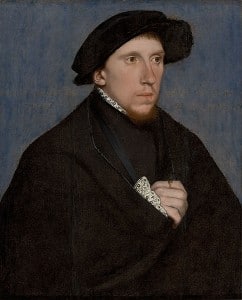
What was Surrey’s crime?
Well, he was charged with improper heraldry. According to Southwell, Surrey had used the arms of his ancestor Edward the Confessor in a shield he’d had painted at Kenninghall, something which only the King was entitled to do, and he had placed the arms of England in the first quarter of his shield, indicating that he had a direct claim to the crown. According to Edmond Bapst, Surrey’s biographer, this last accusation was false: “Surrey had placed the royal arms in the second quarter, and had been careful to differentiate them by collaring the leopards.” However, it was enough for his enemies to bring him down. Surrey was held at Ely Place, then led on foot on the 12th December to the Tower of London, where he was joined by his father, Thomas Howard, 3rd Duke of Norfolk.
Surrey was sentenced to death after being found guilty of treason on 13th January 1547 and was executed on the 19th January 1547. His father was lucky because King Henry VIII died before he was due to be executed. Norfolk was kept in the Tower during Edward VI’s reign, but released in 1553 when Mary I pardoned him.
Also on this day in history…
- 1586 – Parliament met following their request for Elizabeth I to sanction the execution of Mary, Queen of Scots, and the commissioners’ meeting in the Star Chamber where they condemned her to death. A draft proclamation of sentence, written by Elizabeth and William Cecil, Lord Burghley, was published at the Parliament, and this was followed by the drafting of an execution warrant by Sir Francis Walsingham.
Notes and Sources
- Bapst, Edmond (translated by J A MacFarlane and Claire Ridgway). Two Gentleman Poets at the Court of Henry VIII